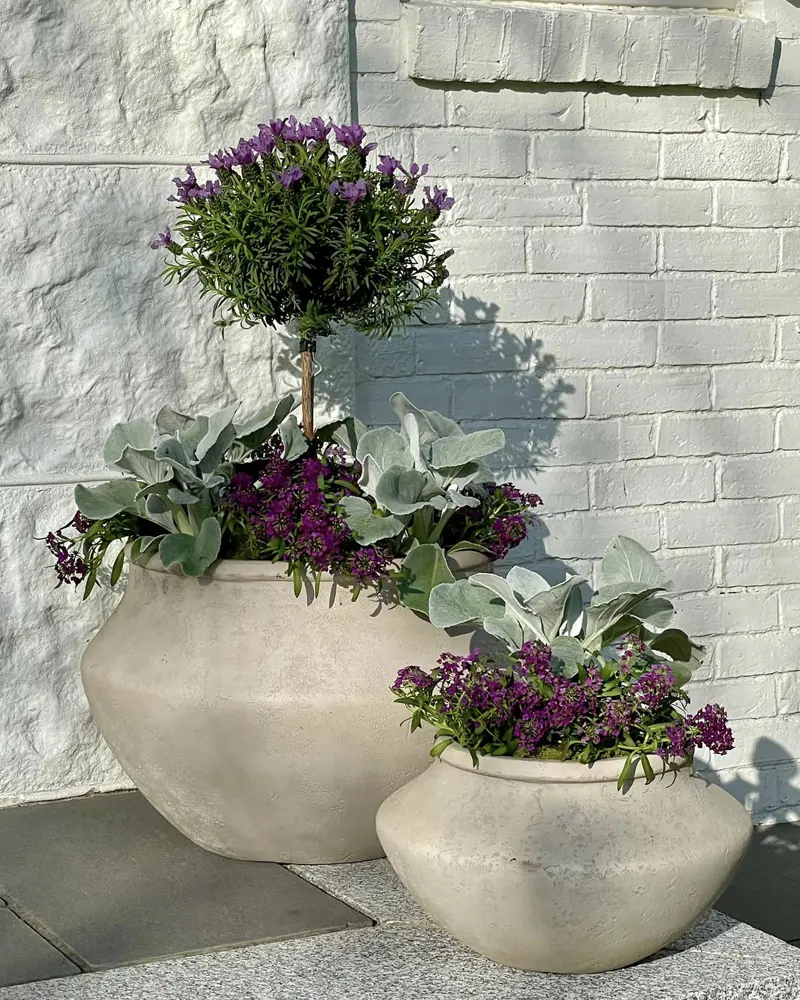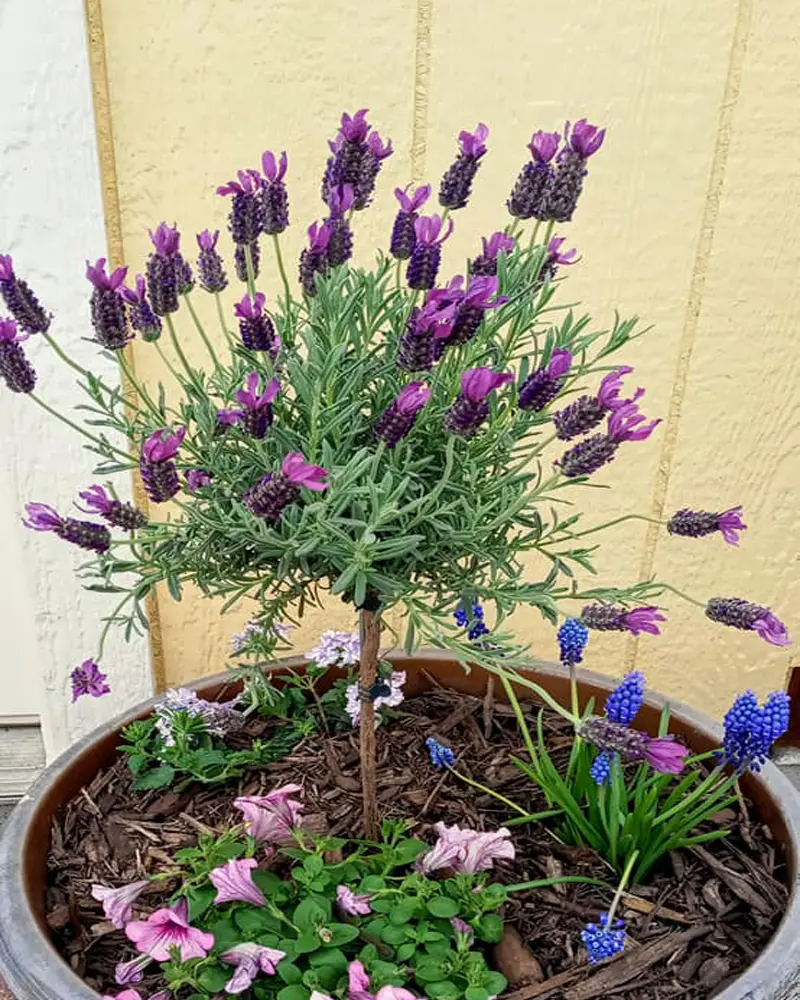Lavender is a popular plant known for its fragrant blooms, medicinal properties, and ornamental appeal. It’s a versatile addition to any garden, capable of adding both beauty and a calming aroma to your outdoor space. Growing lavender from seeds can be a rewarding experience, allowing you to cultivate varieties tailored to your garden’s specific needs. Here, we offer a comprehensive guide on how to grow lavender from seeds, covering everything from seed selection and germination to transplanting and care.
Choosing the Right Lavender Seeds
Selecting the right type of lavender is the first step in successfully growing it from seeds. Lavender comes in multiple varieties, each with unique characteristics suited to different climates and uses. Some of the most popular varieties include:
- English Lavender (Lavandula angustifolia) – Known for its sweet fragrance and hardy nature, English lavender is ideal for colder climates and is often used for culinary purposes.
- French Lavender (Lavandula dentata) – This variety features unique serrated leaves and is commonly grown in warmer climates. French lavender is less cold-hardy but thrives in areas with hot summers.
- Spanish Lavender (Lavandula stoechas) – With its distinctive, tufted flower heads, Spanish lavender is ornamental and highly fragrant, but it is sensitive to cold weather.
- Lavandin (Lavandula x intermedia) – A hybrid of English and Portuguese lavender, Lavandin is larger and has a stronger fragrance, making it a popular choice for essential oil production.
Choosing the right variety depends on your climate, intended use, and garden aesthetics. For most climates, English lavender is a safe choice, while warmer regions may favor French or Spanish varieties.
Preparing to Grow Lavender from Seeds

1. Understanding Germination Requirements
Lavender seeds are notoriously slow to germinate and require specific conditions to encourage sprouting. To improve germination rates, lavender seeds benefit from a process called cold stratification. This process mimics the cold period seeds would naturally experience in winter, helping to break dormancy and promote faster germination.
2. Cold Stratification Process
- Moisten a Paper Towel: Dampen a paper towel without soaking it. Place the lavender seeds on the towel, and then fold it over to cover the seeds.
- Seal in a Plastic Bag: Place the towel in a resealable plastic bag and seal it to retain moisture.
- Refrigerate: Store the bag in the refrigerator for 2 to 4 weeks. Check periodically to ensure the towel remains damp.
- Remove and Sow: After stratification, the seeds are ready for planting.
Planting Lavender Seeds Indoors
Starting lavender seeds indoors provides better control over temperature and moisture, improving your chances of successful germination. Begin sowing lavender seeds 8 to 12 weeks before the last expected frost in your area.
1. Choosing the Right Container
Use seed trays or small pots that provide good drainage. Lavender requires well-draining soil to prevent root rot, so it’s essential to use containers that allow excess water to escape.
2. Soil Preparation
Lavender thrives in sandy, well-draining soil. A cactus or succulent potting mix works well for lavender seedlings, or you can create a mix by combining potting soil with sand or perlite.
3. Sowing the Seeds
- Surface Sow: Lavender seeds need light to germinate, so place them on the surface of the soil and gently press them in without covering them completely.
- Mist with Water: Use a spray bottle to lightly mist the soil, keeping it evenly moist but not soggy.
- Provide Light: Place the container in a location with bright, indirect light, or use a grow light to ensure the seeds receive at least 12 hours of light daily.
- Cover for Humidity: Cover the container with a plastic dome or plastic wrap to retain humidity, but ensure there’s some airflow to prevent mold.
4. Germination Time
Lavender seeds usually germinate within 14 to 30 days. Be patient, as lavender is slow to sprout compared to other herbs.
Transplanting Lavender Seedlings

Once your lavender seedlings have developed a few sets of leaves and are about 2 inches tall, they are ready to be transplanted.
1. Preparing the Garden Bed or Larger Pots
- Soil Preparation: Lavender prefers well-draining, slightly alkaline soil with a pH of 6.5 to 7.5. If planting in clay-heavy soil, consider adding sand or gravel to improve drainage.
- Sunlight Requirements: Lavender needs full sun to thrive, so choose a location that receives at least 6 hours of direct sunlight daily.
2. Transplanting Process
- Harden Off Seedlings: Before transplanting outdoors, harden off your lavender seedlings by gradually exposing them to outdoor conditions over a week.
- Planting Depth and Spacing: Dig holes large enough to accommodate the roots, and plant seedlings at the same depth as they were in their pots. Space plants 12 to 18 inches apart to allow for airflow and reduce humidity around the plants.
- Watering: Water lightly after transplanting, but avoid overwatering, as lavender does not tolerate waterlogged soil.
Caring for Lavender Plants
1. Watering Lavender
Lavender is drought-tolerant once established and requires minimal watering.
- Frequency: Water young plants weekly until they are established, then reduce watering to once every two weeks or less. Mature lavender plants only need watering during prolonged dry spells.
- Technique: Water at the base of the plant to keep the foliage dry and prevent fungal problems.
2. Fertilizing Lavender
Lavender is a low-maintenance plant and generally doesn’t need much fertilizer.
- Type: If desired, use a low-nitrogen fertilizer to encourage blooming. An organic compost application in the spring can also be beneficial.
- Frequency: Fertilize sparingly, as too much nitrogen can result in excessive foliage growth at the expense of flowers.
3. Pruning Lavender
Regular pruning keeps lavender plants healthy, prevents them from becoming woody, and encourages new growth.
- Spring Pruning: After the last frost, trim back any dead or damaged stems to encourage fresh growth.
- Shaping After Blooming: Once the flowering period ends, cut back spent blooms and shape the plant to maintain a compact form.
- Avoid Cutting Into Old Wood: Only prune green growth, as cutting into woody stems may harm the plant.
Pest and Disease Management
Lavender is naturally pest-resistant due to its aromatic oils, but it can occasionally attract certain pests or suffer from diseases.
Common Pests
- Aphids: These pests may cluster on new growth but can be removed with a strong stream of water or treated with insecticidal soap.
- Spittlebugs: These insects create foamy secretions on stems. They are generally harmless but can be removed by hand.
Diseases
- Root Rot: Caused by overwatering or poor drainage. Ensure soil is well-draining and avoid waterlogged conditions.
- Fungal Leaf Spots: To prevent fungal issues, provide good airflow around plants and avoid overhead watering.
Harvesting and Using Lavender
Lavender is ready for harvest once the flowers are fully open, typically in mid-summer.
1. Harvesting Lavender
- Cutting Blooms: Use sharp scissors or pruners to cut stems just above the foliage. Harvest early in the day, after dew has evaporated but before the midday heat.
- Drying Lavender: Hang lavender stems upside down in a dry, dark place with good airflow. Once dried, store lavender in an airtight container.
2. Lavender Uses
Lavender is versatile and can be used in many ways:
- Culinary Uses: Add lavender to teas, desserts, and savory dishes.
- Aromatherapy: Use lavender in essential oils and sachets for a calming scent.
- Crafting: Incorporate dried lavender in potpourri, candles, and soaps.
Frequently Asked Questions About Growing Lavender
Can Lavender Be Grown in Pots?
Yes, lavender grows well in containers if provided with adequate sunlight and well-draining soil. Choose a container with drainage holes and use a potting mix designed for succulents or cacti.
How Long Does Lavender Take to Grow?
Lavender takes about 90 to 120 days to reach maturity from seed. Flowering typically begins in the second year after planting, but well-cared-for plants can bloom for years.
Is Lavender a Perennial or Annual?
Lavender is a perennial in USDA zones 5-9 and can survive mild winters. However, in colder climates, it’s often grown as an annual or brought indoors to protect it from frost.


